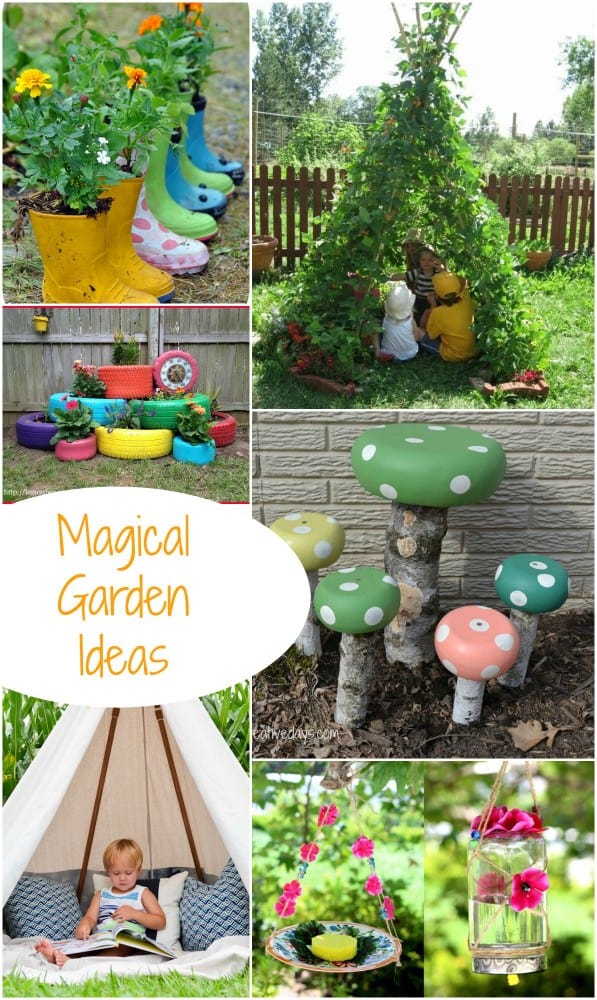Creating a magical garden for children offers a unique opportunity to nurture their imagination, creativity, and connection with nature. As we embark on this journey of garden design, it is essential to consider the aesthetic, practical, and educational aspects that will transform a simple outdoor space into an enchanting retreat. This article provides a comprehensive guide, detailing various tips and ideas to help you cultivate a whimsical garden that captivates and inspires young minds.
It is imperative to recognize the importance of involving children in the gardening process. By engaging with the environment, children can develop a profound sense of responsibility while also learning about the natural world. This interaction not only cultivates an appreciation for nature but also instills values of stewardship and conservation. Thus, the creation of a magical garden serves dual purposes: it is a playground of enchantment and a platform for learning.
To design a garden space that resonates with the innocence and curiosity of childhood, specific elements and themes can be incorporated. Below, we explore various aspects focusing on creating an inviting, topically rich oasis.
Designing a Whimsical Landscape
The initial step in creating a magical garden is the thoughtful design of its layout. Consider a whimsical landscape that encourages exploration and discovery. Incorporate winding pathways made of natural materials. Pebbles, bark mulch, or even stepping stones can help outline paths that create a sense of adventure. These paths can lead to various themed zones within the garden.
Consider the significance of colorful plants that appeal not just visually but also stimulate the senses. Brightly colored flowers such as sunflowers, daisies, and pansies can serve as focal points, drawing children’s attention. Additionally, fragrant herbs such as lavender, mint, and rosemary can invite tactile and olfactory interaction, imparting lessons on plant properties and gardening practices.
It is also pertinent to integrate various height levels through elevated beds, trellises, and arbours. Vertical gardening elements not only enhance visual interest but also provide opportunities for children to engage with plants at different eye levels. This stratification can serve as a metaphor for diversity, encouraging children to appreciate the myriad forms and functions within their environment.
Interactive Features to Foster Engagement
Incorporating interactive features is vital for maintaining children’s interest and involvement in the garden. Construct a small water feature, such as a pond or a fountain, which can attract wildlife and encourage children to engage in observational play. The gentle sound of flowing water can create a calming environment while fostering an appreciation for ecosystem dynamics.
Additionally, building a fairy garden can captivate the imaginations of young gardeners. Using miniature furniture, small figures, and natural elements like pebbles and moss, children can design their own fantastical realms. This encourages imaginative play, a crucial part of cognitive development, while providing a canvas for artistic expression.
Another aspect to consider is the inclusion of sensory gardens. A sensory garden excites the senses through tactile experiences, visual stimulation, and aromatic plants. It can feature textured leaves, vibrant flowers, and fragrant herbs. Incorporating elements such as sandpits or mud kitchens allows for kinetic activities that deepen children’s engagement with their surroundings.
Educational Opportunities within the Garden
A magical garden should not only be playful but also educational. Incorporating garden beds dedicated to practical life skills can teach children vital lessons about nutrition and healthy eating. Planting vegetables such as tomatoes, carrots, and cucumbers can demonstrate the importance of food source awareness and cultivation processes.
Furthermore, utilizing native plants will introduce children to local ecology and the importance of biodiversity. A ‘wildlife corner’ can encourage suitable habitats for beneficial insects and birds, providing a practical lesson in conservation and ecosystem services.
Seasonal lessons can also be integrated into the garden experience. By observing plant growth cycles, children gain a tangible understanding of seasonal shifts and their impact on the environment. This observation cultivates a connection to the rhythms of nature, fostering an innate respect for life cycles.
Artistic Expression through Garden Installations
A garden can also serve as a platform for artistic expression. Encouraging children to contribute their artistic ideas can solidify their sense of ownership and pride in the space. Constructing a mud wall for natural mosaics or creating sculptures using natural materials are ways to integrate artistic elements that align with child-centric education.
Garden art such as painted stones or decorative birdhouses instils a sense of creativity that can resonate beyond the garden space. Artistic endeavors promote fine motor skills and the understanding of aesthetic principles while highlighting the importance of individuality and personal expression.
Sustainable Practices in Garden Design
As we construct gardens for children, it is paramount to embed sustainable practices within our designs. By teaching youngsters about organic gardening, water conservation, and biodiversity, we can empower them with knowledge to become responsible caretakers of their environment.
Utilizing rainwater collection methods not only aids in sustainability but also serves an educational purpose. Teaching children about the water cycle through hands-on experiences reinforces concepts related to conservation and sustainable practices.
Moreover, composting can be introduced as a fundamental practice to demonstrate the recycling of organic materials. Establishing a small compost bin in the garden empowers children to understand waste management and nutrient recycling, reinforcing the idea that environmental stewardship starts at home.
Conclusion: A Garden of Discovery and Growth
In creating a magical garden for children, we are not merely constructing a physical space; rather, we are fostering an environment abundant with potential for exploration, learning, and creative expression. Through thoughtful design, engaging interactive elements, and a commitment to education and sustainability, we can inspire the next generation to cultivate their understanding and appreciation for the natural world.
Such an endeavor enriches children’s lives, allowing them to connect playfully with their environment while acquiring crucial skills and knowledge that will serve them throughout their lives. As custodians of this wondrous journey, we must continue to advocate for and cultivate these green spaces, ensuring they flourish for generations to come.









Leave a Comment